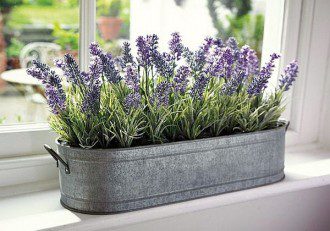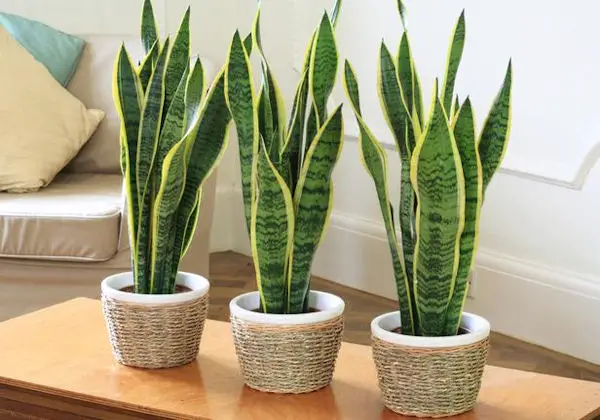4th November 2015
By Carolanne Wright
Contributing Writer for Wake Up World
 If you’re weary of tossing and turning,
unable to sleep at night, a NASA study might just help deliver sweet
dreams. The agency wasn’t researching some newfangled technology,
instead it was studying plants — namely, those that dramatically purify
indoor air. As an added perk, one plant also releases substantial levels
of oxygen in the evening, which enhances restful sleep. But these
aren’t the only benefits.
If you’re weary of tossing and turning,
unable to sleep at night, a NASA study might just help deliver sweet
dreams. The agency wasn’t researching some newfangled technology,
instead it was studying plants — namely, those that dramatically purify
indoor air. As an added perk, one plant also releases substantial levels
of oxygen in the evening, which enhances restful sleep. But these
aren’t the only benefits.
The principles of feng shui — the
time-honored Eastern practice of harmonizing energy within structures
for better health, prosperity and equilibrium — fully support the use of
plants to improve the flow of energy throughout a building. Plants also
soften indoor environments, add aesthetic value and — studies have
shown — reduce stress and anxiety. What’s more, these living, breathing
bundles of green also significantly improve indoor air quality.
As Mary Desaulniers Ph.D notes in “House Plants For Better Sleep”: “In
general houseplants give a pleasant , soothing effect to the bedroom,
an effect that promotes relaxation and sleep. They also absorb odors and
fumes, replenish the air with oxygen and humidity, keeping the
temperatures cool and sustainable for better sleep.”
Healthy plants create cleaner air
through the release of oxygen and absorption of carbon dioxide, as well
as by removing common air pollutants like formaldehyde, benzene, xylene,
ammonia, acetone and ethyl acetate. Additionally, specific indoor
greenery can balance humidity/dryness, reduce microbes and mold, while
improving conditions for those suffering from respiratory ailments. And
some flowering plants release a calming fragrance, further
amplifying health-boosting and relaxing qualities.
Given the Environmental Protection
Agency (EPA) has repeatedly warned that indoor air pollution is one of
the greatest risks to public health, and that stagnant indoor air is
oftentimes more heavily polluted than outdoor air, it pays to invest in
plants that will not only beautify your environment, but also mop-up harmful airborne contaminants.
Best Plants for the Bedroom
Jasmine
With beautifully scented blossoms that
promote relaxation, jasmine is one of the finest plants you can have
in the bedroom. Research has shown that jasmine significantly reduces
anxiety levels, leading to improved sleep quality.
Care: Grows best in moist, well-drained
soil. Place in a warm spot with full sun exposure in the winter (a
minimum of four hours per day). During summer, jasmine enjoys bright,
indirect or curtain-filtered sunlight.
Lavender
A familiar scent with
exceptional calming properties, lavender has been used throughout the
ages for relaxation and taming worry. On top of that, science has found
the plant is effective for lowering blood pressure and heart rate, while
reducing stress.
Care: Place in a bright window with full sun. Water moderately.
Bamboo Palm (Reed Palm)
Awarded a high purifying score of 8.4 in
the NASA study, bamboo palm is remarkably adept at removing benzene and
trichloroethylene — two chemicals that can cause respiratory distress,
which in turn, encourages restless sleep.
Care: Thrives in shade or indirect sunlight and slightly moist (but not wet) soil.
Valerian
A perennial flowering plant with lovely
scented white or pink flowers in the summertime, valerian is well-known
among herbalists as the go-to plant for reducing nervous complaints like
insomnia,
anxiety and over-excitability. The root is generally the most widely
used part. However, when flowering, valerian releases a calming,
sleep-inducing vanilla fragrance.
Care: Needs at least a full six hours of
sun each day. If you have a bright window ledge in your bedroom,
valerian is a good choice. Requires rich soil and plenty of water.
Peace Lily
Another winner for promoting sound
slumber, peace lily tops the NASA list for plants that filter hazardous
benzene, trichloroethylene and formaldehyde toxins from indoor
environments. Not only beautiful to the eye, the plant inhibits airborne
microbes that trigger allergies and respiratory complaints, which can disrupt sound sleep.
Care: Keep away from children and pets. Peace lily enjoys a shady spot and only requires weekly watering.
Snake Plant
Easy to grow, snake plant absorbs carbon
dioxide and releases oxygen during the night (a majority of plants do
this in the daytime), thereby fostering deep sleep.
Care: Doesn’t require much light or
water, so it will be happy in any dim corner of your bedroom. If you’re
seeking a low-maintenance plant that’s hard to kill, this would be it.
Gardenia
With striking evergreen leaves and
intoxicating flowers, gardenia is a wonderful choice if you’re willing
to invest a bit of extra effort in caring for the plant. The fragrance
of the flowers are well worth it and will quickly soothe you into a
peaceful slumber.
Care: Requires bright, indirect light
and high humidity. Gardenia’s also like rich, well-drained soil that is
slightly acidic. The plant will need a constant supply of moisture to
remain healthy. Learn more about gardenia care here.
- Always check if they are toxic to children and animals to ensure they are suitable for your family.
- Remember to wipe the leaves every week or so to ensure the plants can effectively do their job – just look at it as the equivalent of changing the filter in your air purifier!
- Choose a good mix of those that purify the air and those that induce sleep through their scent for optimum results.
- NASA recommends between 15 and 18 air-purifying plants in an 1800 square foot home, with a few of these in each bedroom.
Kamal Meattle: How to Grow Fresh Air
Article sources:- https://archive.org/details/nasa_techdoc_19930072988
- http://www.streetdirectory.com/travel_guide/108648/alternative_medicine/house_plants_for_better_sleep.html
- http://www.huffingtonpost.com/2015/07/29/best-houseplants-destress_n_2964013.html
- http://simpleorganiclife.org/9-houseplants/?c=tmuwall
- http://garden.lovetoknow.com/wiki/Jasmine
- Considering the Flu Shot? Here are Five Reasons to Think Twice
- Dr Sebi: The Man Who Cures Aids, Cancer, Diabetes and More
- Plastic-Eating Mushroom Discovered in the Amazon Rainforest — A Solution for Our Trash Saturated World?
- Chronic Lyme Disease: A Modern Plague the Government Chooses to Ignore
- Big Pharma and Organized Crime — They are More Similar Than You May Think
- Over 100 Scientific Studies Agree: Cannabis Annihilates Cancer
- Emotional Energetic Healing: The Future of Medicine is Here
- Why Every Parent Should Consider Unschooling
- The Greenhouse of the Future: Grow Your Own Food Year-Round With This Revolutionary System
- First U.S. City Produces More Electricity Than It Uses — With 100% Renewable Technology
- Autistic Boy with Higher IQ Than Einstein Discovers Gift After Removal from State-Run Therapy
- Enhance Spiritual, Mental and Physical Well-being with a Pineal Gland Detox
About the author:
 Carolanne
enthusiastically believes if we want to see change in the world, we
need to be the change. As a nutritionist, natural foods chef and
wellness coach, Carolanne has encouraged others to embrace a healthy
lifestyle of organic living, gratefulness and joyful orientation for
over 13 years
Carolanne
enthusiastically believes if we want to see change in the world, we
need to be the change. As a nutritionist, natural foods chef and
wellness coach, Carolanne has encouraged others to embrace a healthy
lifestyle of organic living, gratefulness and joyful orientation for
over 13 years
Through her website Thrive-Living.net
she looks forward to connecting with other like-minded people from
around the world who share a similar vision. Follow Carolanne on Facebook, Twitter and Pinterest.
